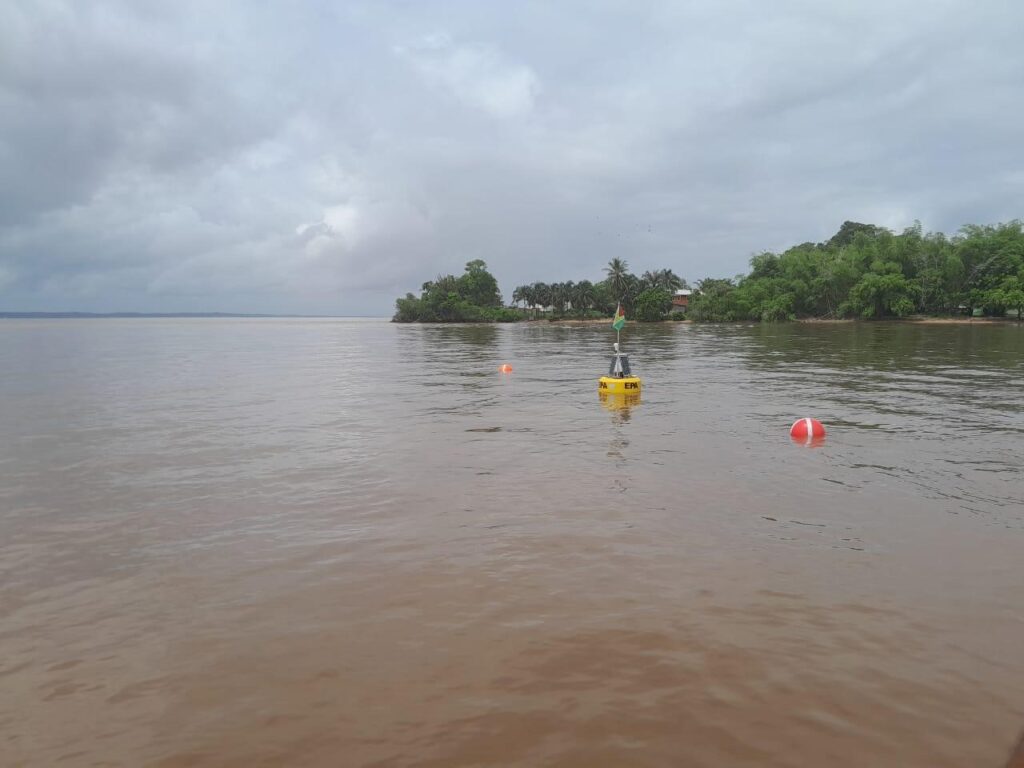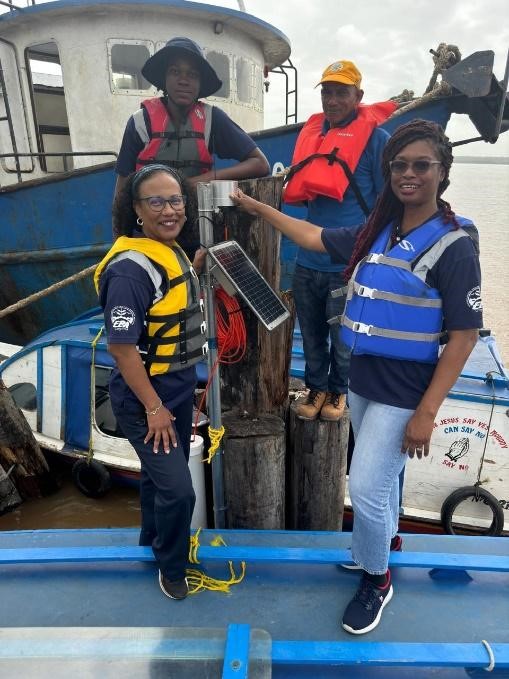The Environmental Protection Agency, in mid-May, successfully deployed a 2nd Real-Time Water Quality Monitoring System, at Bartica, Essequibo, River. This cutting-edge technology is capable of measuring a range of water quality parameters and transmitting readings in real-time to a computer at EPA for storage and analysis. Data collected by the Monitoring System can also be visualized through web-based platforms/applications and be viewed and analyzed by the public in the real-time.

| Deployment of Data Buoy RTWQMS in the vicinity of the Saxacalli Village |
Good water quality is very critical to the health of aquatic ecosystems and the people who depend on the services they provide. Guyana’s vast rivers, their numerous tributaries and creeks are an integral part of our economy and culture. However, increasing human activities including those of an industrial (and mining) nature occurring along and close to rivers are causing concerns about water pollution and environmental degradation.
As the entity empowered to take effective measures to control of pollution, the EPA must obtain steady, quick and reliable data on water quality to detect any water pollution. The Water Quality Monitoring System provides such data to the EPA in real-time, allowing for quick detection of pollution sources, timely response to prevent and mitigate pollution and stop poor practices.
The EPA places great value on community participation and actively collaborated with the Bartica Township, Residents of Saxacalli and Government Agencies for the successful deployment of the Water Quality Monitoring System in the Essequibo River.
The EPA deployed its 1st RTWQMS in the lower Demerara River in August, 2023. This and the one deployed in Bartica were both purchased with G$100 M allocated by Government to the EPA in as part of its 2023 Budget.

Deployment of Stationery RTWQMS Platform at the Bartica Stelling
The EPA intends to continue to boost its capability to collect environmental data through cutting-edge technology for scientific and data-driven decision-making regarding the impacts of development, and appropriate measures to mitigate pollution, and protect and conserve the environment.
